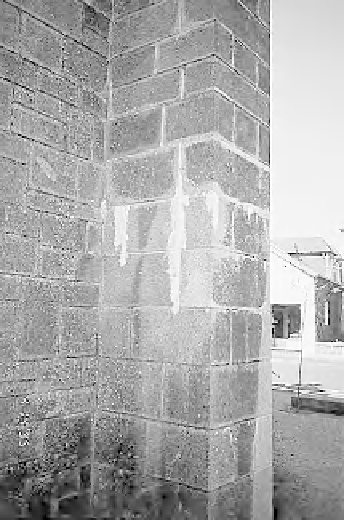Environmental Engineering Reference
In-Depth Information
8.3.5.3.
Encrustations
Encrustations are a compact, hard, mineral outer layers adhering to the stone.
The surface morphology and color are usually different from those of the stone.
Encrustations are generally found below areas of the building where water is
percolating or has percolated in the past [VER 93]. They are generally white (see
Figure 8.29) and adhere firmly to the stone surface. Encrustations are clearly due to
a precipitation process following any kind of leaching. Encrustations on monuments
are frequently deposits of materials mobilized by water percolation and thus come
from the building itself: sulfates, metallic oxides and silica may be found, but the
most frequent encrustations are composed of calcite [GEN 92]. Their formation
mechanism has been compared to that of stromatholiths due to their lamellar
structure, composed of thin and coarse calcite layers [URZ 91].
Figure 8.29.
Calcite encrustations on a granitic ashlar,
Plougastel-Daoulas church, France
Concretions are kinds of encrustations with a specific nodular, botryoidal (grape-
like) or framboidal (raspberry-like) form [VER 08]. Concretions may even have
conic shapes in drapery-like vertical sheets. Stalagmites and stalactites are kinds of
concretions that are often found on the surface of bridge arches.

